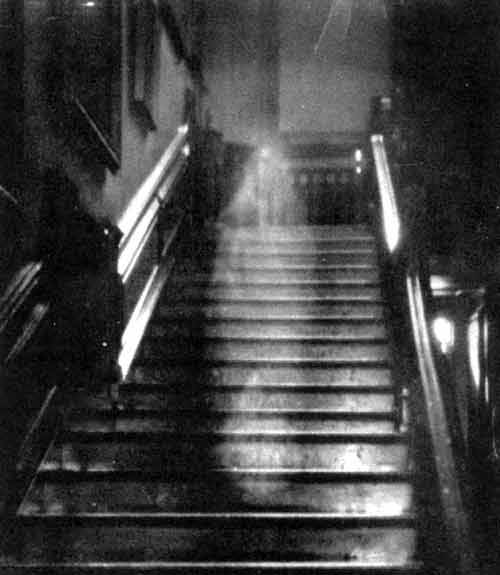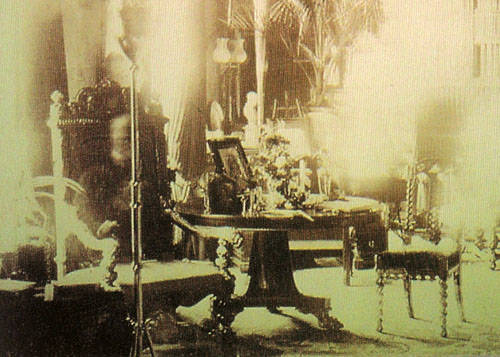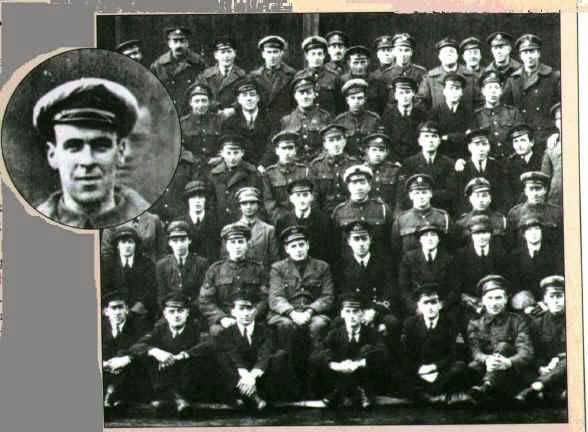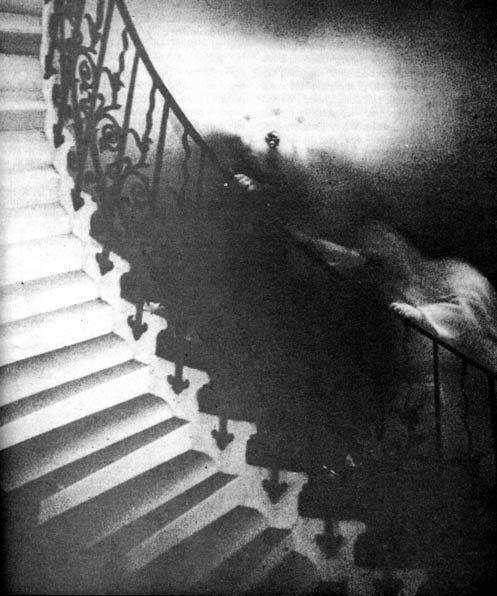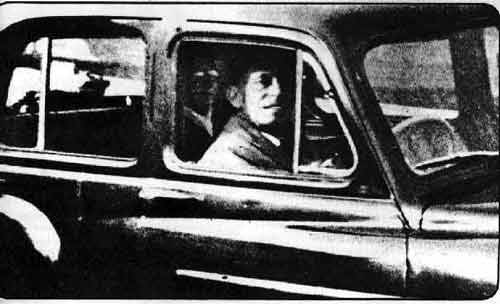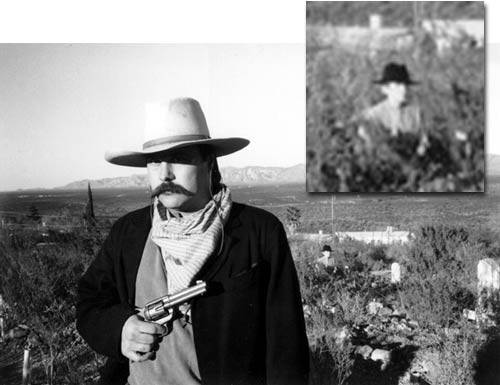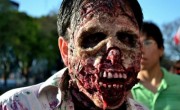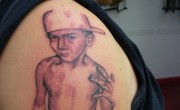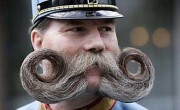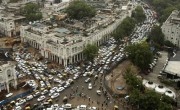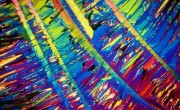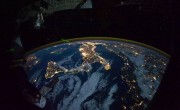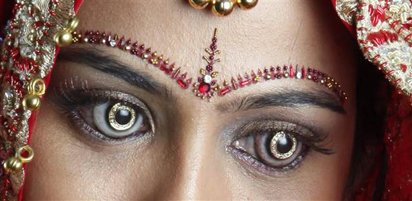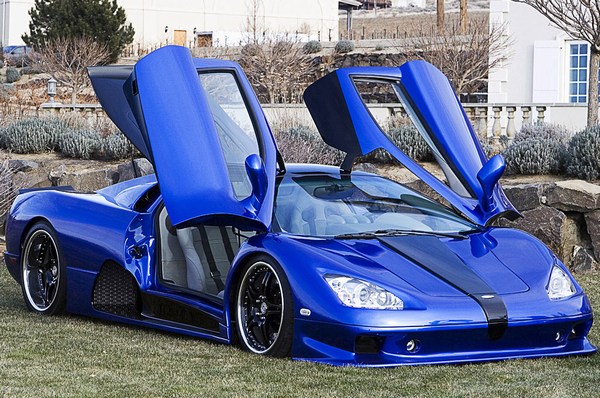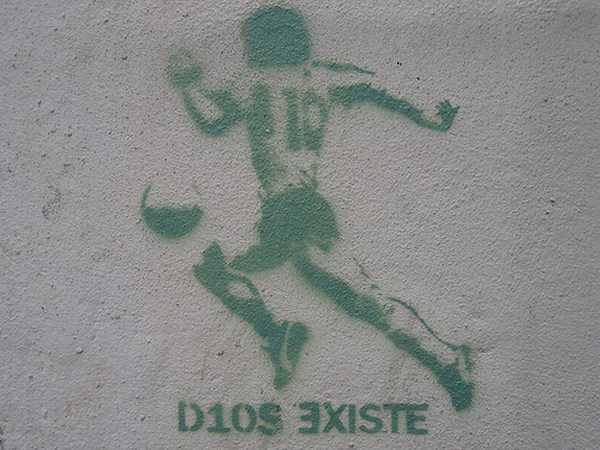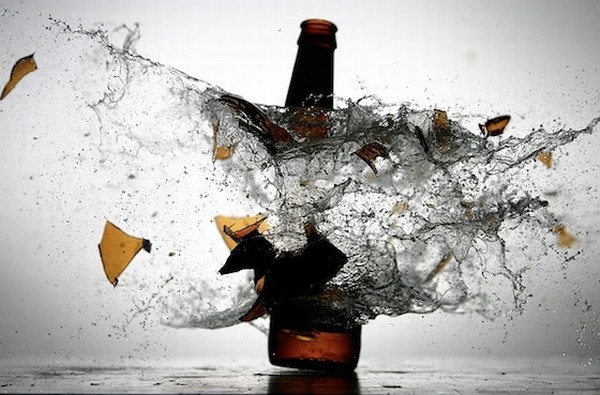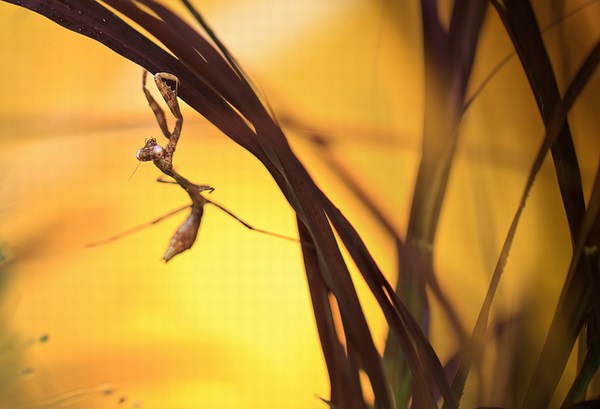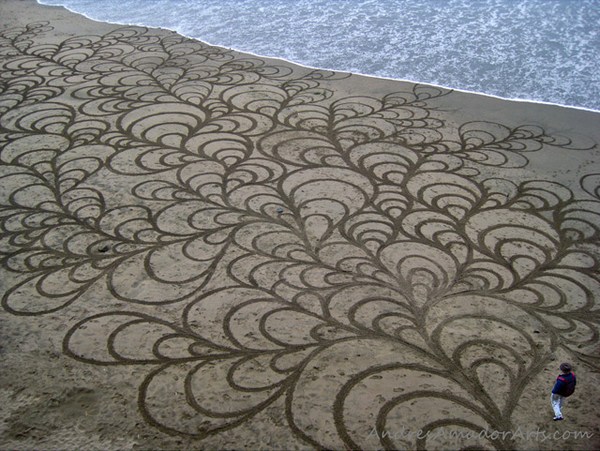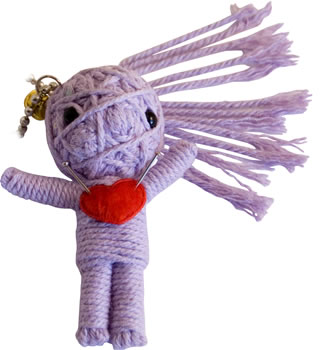These photographs are considered by many to be the real deal – photographic evidence of ghosts. Faking ghost photos through double exposure and in-the-lab trickery has been around as long as photography itself; and today, computer graphics programs can easily and convincingly create ghost images. But these photos are generally thought to be untouched, genuine portraits of the unexplained.
1. The Brown Lady
This portrait of “The Brown Lady” ghost is arguably the most famous and well-regarded ghost photograph ever taken. The ghost is thought to be that of Lady Dorothy Townshend, wife of Charles Townshend, 2nd Viscount of Raynham, residents of Raynham Hall in Norfolk, England in the early 1700s. It was rumored that Dorothy, before her marriage to Charles, had been the mistress of Lord Wharton. Charles suspected Dorothy of infidelity. Although according to legal records she died and was buried in 1726, it was suspected that the funeral was a sham and that Charles had locked his wife away in a remote corner of the house until her death many years later.
2. Lord Combermere
This photograph of the Combermere Abbey library was taken in 1891 by Sybell Corbet. The figure of a man can faintly be seen sitting in the chair to the left. His head, collar and right arm on the armrest are clearly discernable. It is believed to be the ghost of Lord Combermere.
Lord Combermere died in 1891, having been struck and killed by a horse-drawn carriage. At the time Sybell Corbet took the above photo, Combermere’s funeral was taking place some four miles away. The photographic exposure, Corbet recorded, took about an hour. It is thought by some that during that time a servant might have come into the room and sat briefly in the chair, creating the transparent image. This idea was refuted by members of the household, however, testifying that all were attending Lord Combermere’s funeral.
3. Freddy Jackson
This intriguing photo, taken in 1919, was first published in 1975 by Sir Victor Goddard, a retired R.A.F. officer. The photo is a group portrait of Goddard’s squadron, which had served in World War I at the HMS Daedalus training facility. An extra ghostly face appears in the photo. In back of the airman positioned on the top row, fourth from the left, can clearly be seen the face of another man. It is said to be the face of Freddy Jackson, an air mechanic who had been accidentally killed by an airplane propeller two days earlier. His funeral had taken place on the day this photograph was snapped. Members of the squadron easily recognized the face as Jackson’s. It has been suggested that Jackson, unaware of his death, decided to show up for the group photo.
4. Tulip Staircase Ghost
Rev. Ralph Hardy, a retired clergyman from White Rock, British Columbia, took this now-famous photograph in 1966. He intended merely to photograph the elegant spiral staircase (known as the “Tulip Staircase”) in the Queen’s House section of the National Maritime Museum in Greenwich, England. Upon development, however, the photo revealed a shrouded figure climbing the stairs, seeming to hold the railing with both hands. Experts, including some from Kodak, who examined the original negative concluded that it had not been tampered with. It’s been said that unexplained figures have been seen on occasion in the vicinity of the staircase, and unexplained footsteps have also been heard.
5. The Back Seat Ghost
Mrs. Mabel Chinnery was visiting the grave of her mother one day in 1959. She had brought along her camera to take photographs of the gravesite. After snapping a few shots of her mother’s gravestone, she took an impromptu photo of her husband, who was waiting alone in the car. At least the Chinnerys thought he was alone.
When the film was developed, the couple was more than surprised to see a figure wearing glasses sitting in the back seat of the car. Mrs. Chinnery immediately recognized the image of her mother – the woman whose grave they had visited on that day. A photographic expert who examined the print determined that the image of the woman was neither a reflection nor a double exposure. “I stake my reputation on the fact that the picture is genuine,” he testified.
6. The Ghost of Boothill Cemetery
“This is the photo that changed my opinion about ghost photos,” says Terry Ike Clanton, who runs the TombstoneArizona.com website. Clanton is an actor, recording artist and cowboy poet, and is also a cousin of the legendary Clanton Gang who clashed with the Earps and Doc Holliday at the famous gunfight at OK Corral. Clanton took this photo of his friend at Boothill Graveyard. The photo was taken in black and white because he wanted Old West-looking pictures of himself dressed in Clanton’s 1880-period clothes. Clanton took the film for developing to the local Thrifty Drug Store, and when he got it back was startled at what he saw. Among the gravestones, just to the right of his friend, is the image of what appears to be a thin man in a dark hat. By height, the man appears to be either legless, kneeling… or rising up out of the ground.

